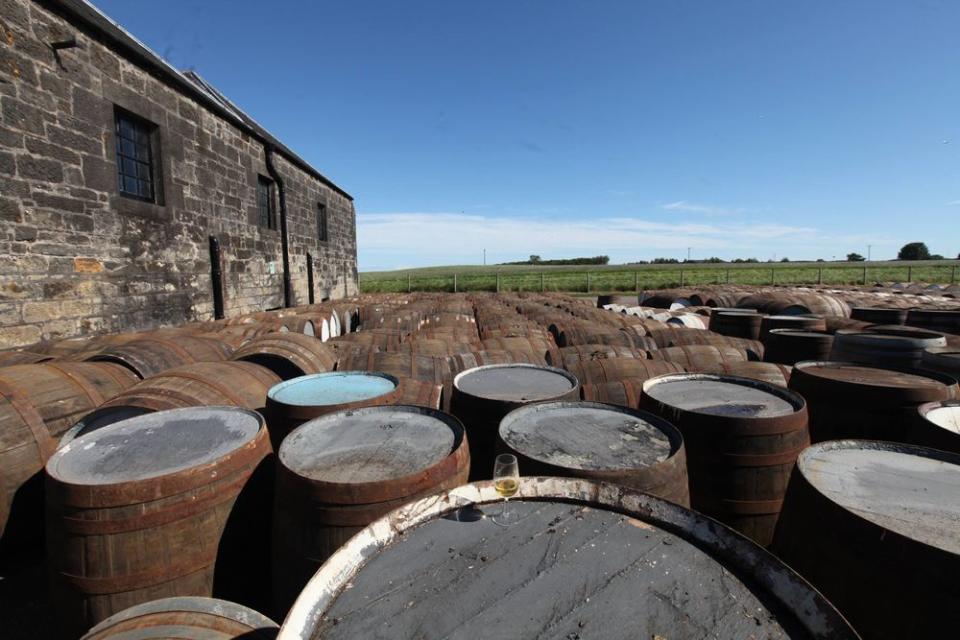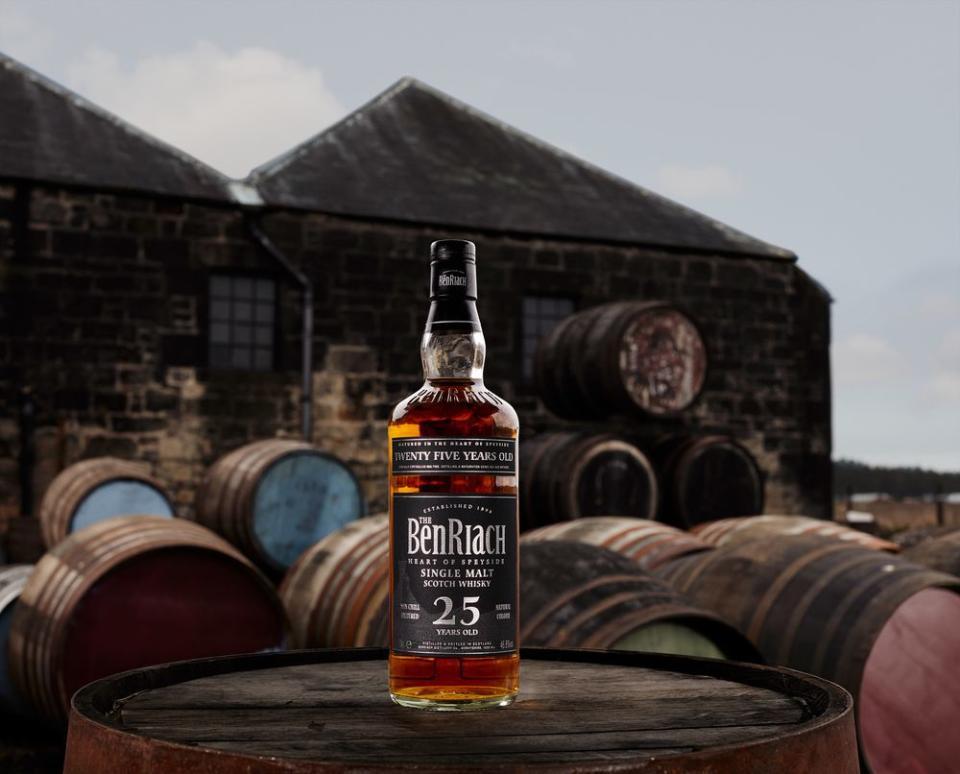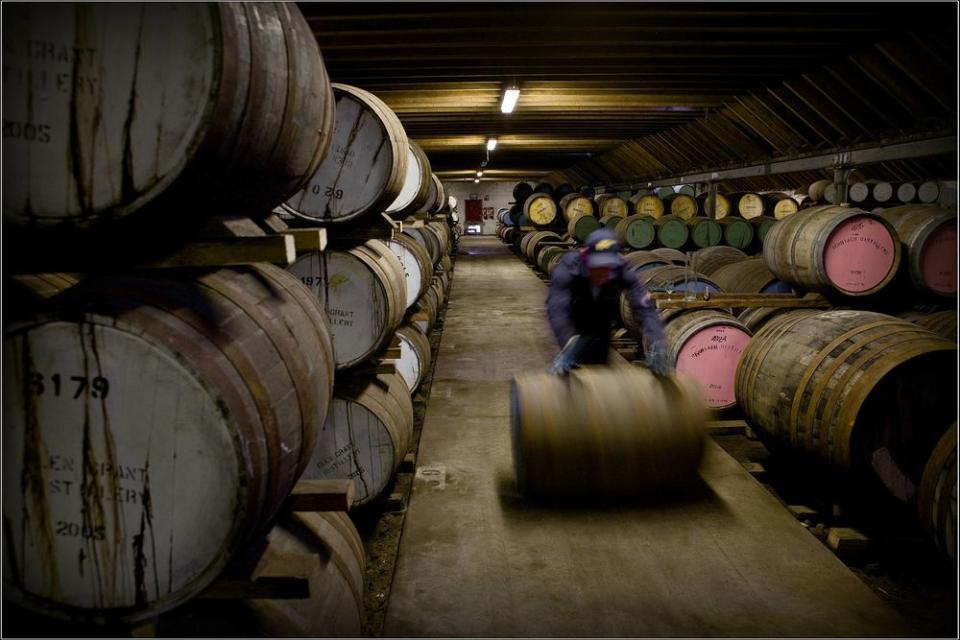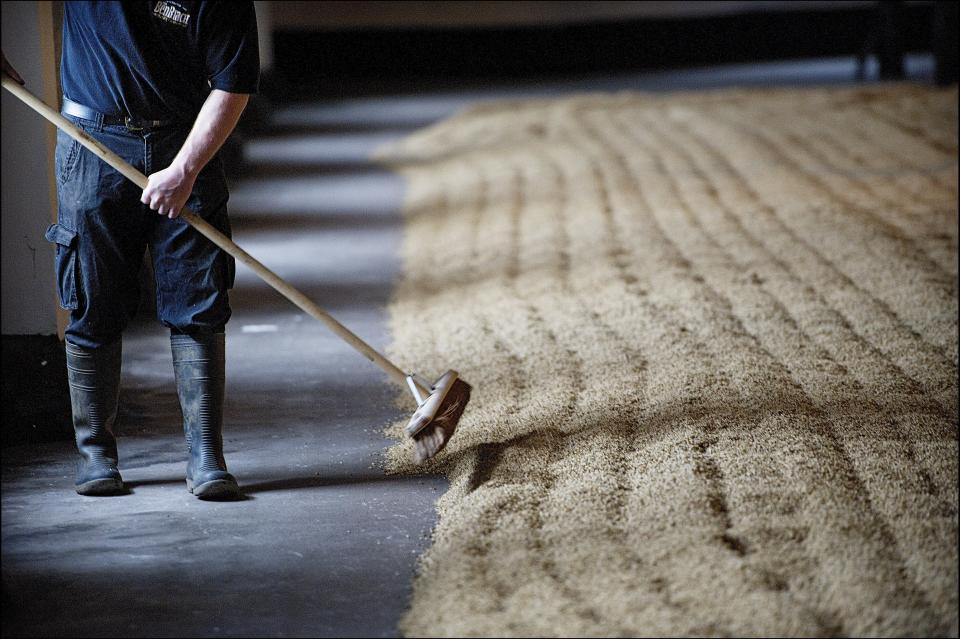Inside BenRiach: Scotland's Most Eclectic Scotch Whisky Maker
Standing among racks of mismatched barrels inside BenRiach distillery’s Warehouse 13, Rachel Barrie briefly appears to have run out of descriptors for the honey-hued, 10-year-old whisky she’s gently nosing from the glass in her hand.
“You’re going to start getting the fruit and the spice, and then in time you get more malt,” she says, bringing the glass to her nose a second time. “So on the nose, the pear is beautiful, there’s apple, there’s poached peach, there’s bananas, it’s like a big fruit bowl”—another inhale—“but it’s smothered in cream, it’s drizzled with honey…”
A long pause precedes an audible sigh as she reaches for a tasting note just beyond her grasp. Then, just as it seems like the right words might elude her: epiphany. “Apricot! Tarte tatin!”
If that sounds like a whole lot of very specific tasting notes to pull from a single dram of not-so-old Speyside Scotch whisky, it’s only because there’s a whole lot going on in the glass. That’s typical for BenRiach, which produces some of the region’s more atypical whiskies, thanks largely to a collection of aged whisky stocks unique to the region as well as the hodgepodge collection of casks in Warehouse 13 in Moray, Scotland. It’s here that Barrie—master blender for BenRiach parent Brown-Forman since 2017—experimentally marries whisky and wood, drawing on one of the most eclectic cask collections in Speyside to layer notes of spice, vanilla, sherry, and (sometimes) smoke onto the light, fruity canvas of a traditional Speyside single malt.
The resulting whiskies can evoke a sumptuous fruit bowl topped with honey and clotted cream, or—as in the case of the 25-year-old BenRiach that reached U.S. shelves for the first time last month—something deeper and more varied; apples, pears, and citrus, but also chocolate and subtle wood notes. Rather than hewing to a specific flavor profile, Barrie says, the common thread tying together BenRiach’s vast range of expressions (which, unconventionally, includes both peated and unpeated expressions throughout its core range) is a signature complexity. “It’s going to have that fruit but it’s also going to have a multi-dimensional character,” she says of BenRiach. “You’re going to get layers of taste.”

Barrie took over as master blender following BenRiach’s purchase by Brown-Forman, the Louisville, Ky.-based owner of Jack Daniels, in 2016, from an independent U.K.-based consortium. That acquisition is bringing more U.S. visibility to BenRiach and—fortunately—more BenRiach to the U.S., a market largely unfamiliar with its older, rarer expressions. As such, the arrival of BenRiach 25 on U.S. shelves marks a significant inflection point for a distillery that’s experienced more than a few.
Opened in 1898, BenRiach closed just two years later when an industry-wide crash led to the mothballing of distilleries across Scotland. Rebooted by Glenlivet Distillers in 1965, the distillery passed from one owner to another over the decades following as the industry consolidated, its whiskies used almost exclusively for blending. BenRiach did not release its first single malt under its own brand name until 1994.

But the distillery’s tendency toward the unconventional emerged decades before BenRiach began bottling its own single malts. In 1972, it began peating some of its whisky, a practice of treating barley malt with peat smoke prior to distillation, which provides some whiskies with their distinctive smoky qualities. The practice was common elsewhere in Scotland, but rare for a Speyside distillery at that time.
Some of the resulting whisky has survived in BenRiach’s warehouses, providing Barrie and company with stocks of peated Speyside whisky from as far back as the 1970s, something other distilleries in the region can only envy now that peated Speyside whiskies have grown more fashionable.
Then there’s Warehouse 13 and its unique collection of casks: American white oak ex-bourbon barrels, French wine barriques, massive Spanish sherry “hogsheads,” and aging rum casks, among them. Each imparts its own unique qualities to the whisky that matures in them, drawing flavors from both the wood itself and the residual liquid that was in them previously, giving Barrie ample latitude to experiment. Sicilian marsala, French sauternes, Hungarian Tokaji—not every cask ends up in BenRiach’s repertoire (the super-sweet Tokaji proved a flop), but in Warehouse 13 there are no bad ideas.
Too much time in contact with wood (or with the wrong wood) can of overpower the delicate, fruity Speyside characteristics distillers want to preserve in their whiskies, and most Speyside whiskies will spend time in just one or two different cask types before bottling. It’s not uncommon for BenRiach’s whiskies to spend time in three or four in pursuit of that signature complexity. “Each individual cask is fascinating,” Barrie says. “And when you start combining them, you’re delivering what’s really the ultimate, complex taste experience.”

The newly-arrived (in the U.S.) BenRiach 25 lends credence to the notion that BenRiach is both of Speyside and apart from it. Characteristic Speyside notes of fruit are there, but also autumnal spices, like they’ve been baked into a pie. The citrus notes come across more like lightly grilled pineapple. Then there are the layers of Oloroso sherry, vanilla, and present-but-not-overwhelming wood—flavors imparted by time spent in bourbon, sherry, and French Burgundy casks.
“It’s a Speyside distillery that doesn’t really act like a Speyside distillery,” says Danny Whelan, Brown-Forman business development manager of BenRiach. And that’s allowed BenRiach to distinguish itself within a crowded region where more than half of Scotland’s distilleries—as well as some of its largest—reside. “There are just so many things happening at BenRiach that, for Speyside, shouldn’t be.”
And that, of course, is the point. In BenRiach’s Warehouse 13, many of those things are happening in the casks surrounding Barrie as she takes a sip of BenRiach’s flagship 10-year-old and smiles, summoning another tasting note. This time, it comes easily. “Now if that’s not liquid sunshine in a glass,” she says, “I don’t know what is.”
More must-read stories from Fortune:
—Why liquor makers are promoting cocktails over shots
—This Patagonian spirit wants to be America’s next bartender favorite
—Whispering Angel maker releasing new luxury wine
—Meet the data-obsessed collector tracking million-dollar whiskies
—Acclaimed chef Thomas Keller on fine dining and eating local
Follow Fortune on Flipboard to stay up-to-date on the latest news and analysis.

